Patent Leather has a long history with Jordan Brand, beginning with a push for it by MJ himself in the 1990s.
This week, the Air Jordan 1 “Patent Bred” released to the pandemonium we’ve come to expect.
Like many retro sneaker releases, fans flocked to the SNRKS app for a chance to cop the shiny flip on MJ’s “Banned” original, just as eager to enter the conversation as they were to win The Draw.
As alluded, models made famous by Michael Jordan selling out in seconds is nothing new. This trend was the norm for all of 2021 and has heightened almost annually in recent years.

However, the last launch of the year from Jordan Brand proved particularly curious as it captivated a mass audience, not by bringing back a true-to-form original, but rather by candy coating a familiar favorite in a material made famous by the only other Air Jordan with the same historic juice as the debut model.
So, just how far back does patent leather go within the Jumpman lineage, and why does it continue to move the needle the way it does?
The Arrival & Request
Basketball fans of a certain age remember the first time they saw the Air Jordan 11.
Back from baseball with his back against the wall in the 1995 NBA Playoffs, the greatest to ever play the game was finding his footing in the Eastern Conference Semis against the surging Orlando Magic.
Still donning the somewhat foreign No. 45, Jordan debuted the “Concord” colorway of what was once dubbed the Jordan Beyond, to the surprise of fans, teammates, and even designers at Nike.
The totally rogue move led to fines from the league due to color blocking — an ironic premonition that these would be very, very popular — making Mike move to “Space Jam” PEs and No. 23 soon after.
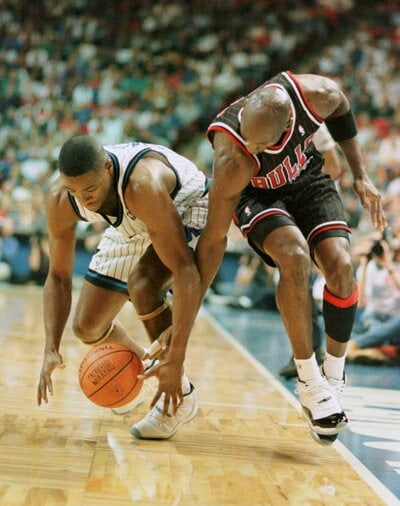
Sadly, an early exit from the postseason for the Bulls meant fans had to wait months on end for Mike to wear them again and for pairs to release at retail.
For sneakerheads, waiting a whole summer to save up for Mike’s new patent leather kicks felt like an eternity.
For Mike, the shoe itself felt years late.
“MJ actually wanted to put patent leather on the Air Jordan 9,” former Jordan Brand vice president Gentry Humphrey told Boardroom. “To be quite honest with you, at that time we weren’t even ready for it.”
Mike asking Nike for patent leather on his shoes started in the early ’90s but didn’t seep into the creative consciousness until he first retired from the game. Quietly crafting the kicks for a comeback no one knew would actually happen, Tinker Hatfield came around to MJ’s old idea for the AJ9 when working on the 11.
While the out-of-the-box material choice turned heads for its aesthetic, the rationale to actually use it was deeply rooted in function.
“Patent leather doesn’t stretch,” Humphrey said. “It became functional and we started to share that information with MJ and he was already on it.”
While performance was always the premium for Mike and his sneakers, that’s not to say he was still wooed by the idea that the shoes could make a splash in the lifestyle lane.
“As MJ saw the initial renderings, he said, ‘I could see this being worn off the court. Performers are gonna want to rock it and people are going wear it with a tuxedo,'” Humphrey said.
“You could see it just from the initial renderings.”
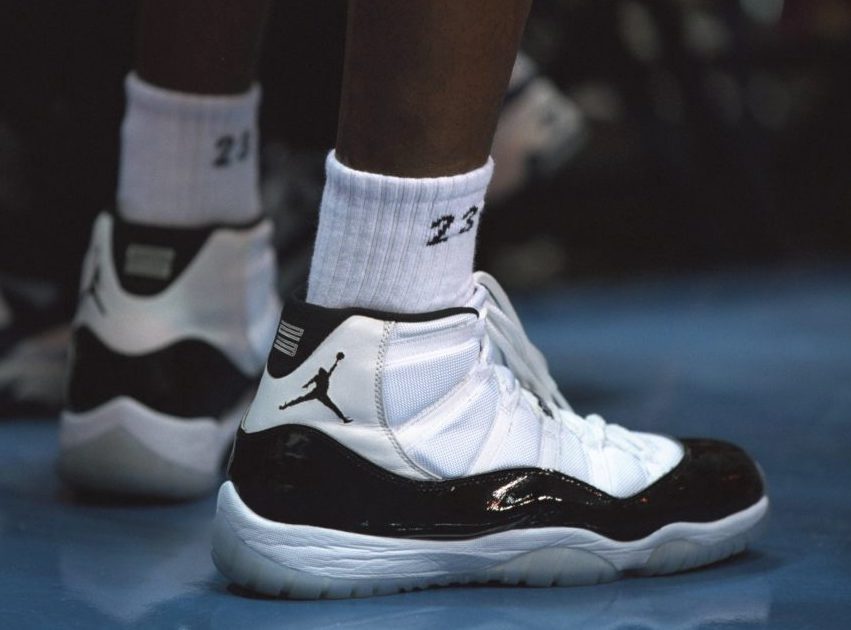
Finally in October 1995, the “Concord” Air Jordan 11 released at retail to absolute pandemonium.
Following lackluster sales of the Air Jordan 9 and Air Jordan 10 — much related to Mike’s break from the game and baseball sabbatical — the patent leather look could not be kept on the shelves as pairs sold out at retail into the Spring of 1996.
As for function? That part worked pretty well, too.
Famously, the Chicago Bulls set an NBA record with 72 wins with MJ wearing the AJ11 in all 82 games that season. Avenging their loss to the Magic, the Bulls went on to win their fourth NBA title with Mike wearing red, sparking the GOAT’s second three-peat.
Instantly, patent leather had its place in sneaker history.
Y2K Takeover
Following Michael Jordan’s second retirement in 1999 and the birth of his namesake conglomerate, the newly founded Jordan Brand looked to maintain a presence and pulse as leaders in the footwear market even with their leader away from the game.
All odds suggested this would be difficult as sales for Air Jordan product at Nike plunged during Mike’s first retirement, making it perfectly clear that MJ and company would have to pull out all the stops.
This, of course, included patent leather.
In the year 2000, Jordan Brand issued the first retro release of the Air Jordan 11. While reissued models from the heralded line did not set the world on fire in 1994 or 1995 only to see slightly warmer fanfare in 1999, the Air Jordan 11 Retro absolutely crushed.
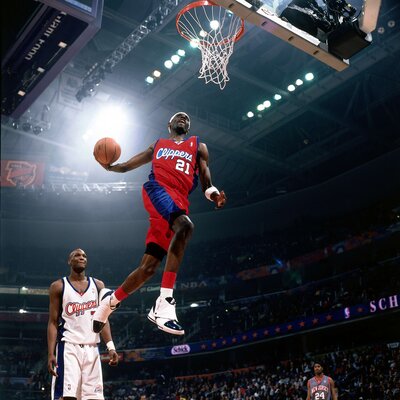
“It was a thing at that point,” Quentin Richardson told the Boardroom in regard to the early Air Jordan 11 Retro releases. “It was pandemonium when we went to the mall. Once people knew they were official, I would have my friends in the league relying on me as the plug.”
Instantly causing the same commotion at shopping centers across the country as it did five years prior, fans lined up for a chance to buy Mike’s most famous model the second it came back to stores.
Years before StockX set the market for what a shoe should sell for after it released, customers had no problem paying more than box price on a pair of Air Jordan 11 Retros. This proved true in mall parking lots the day they dropped and even more so months later on eBay.
The momentum around the Air Jordan 11 Retro lifted the entire Jordan Brand in the lifestyle lane. Only a year later in 2001, a litany of Air Jordan 11 Retros released with plenty of patent leather setting off both mid- and low-top launches.
Additionally, the all-new Air Jordan 16 — the brand’s latest game shoe set to be worn by their new stable of endorsers — returned the shiny material as a statement to score the toe box.
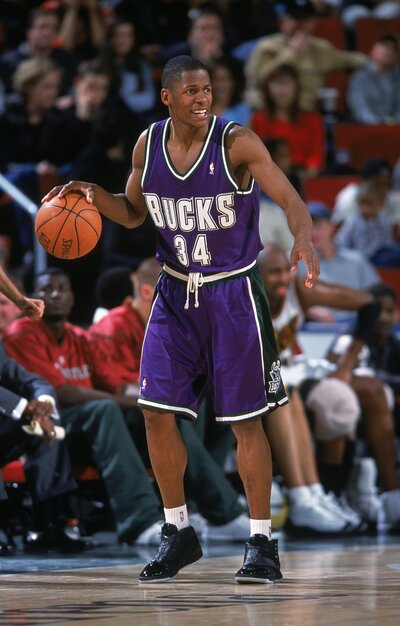
The Air Jordan 16 proved much more popular among fans than the avant-garde Air Jordan 15 that preceded it with patent leather proving so hot that it invaded the entire realm of retro and performance basketball across all brands.
In 2002, Jordan Brand put the Air Jordan 11 Retro back in the vault, instead experimenting with patent leather on the model Mike first wanted it on: the Air Jordan 9.
MJ’s original notion proved a hit, with Jordan Brand later tying two classics together in 2003 with the release of a three-pack of all-patent leather Air Jordan 1 Mids.
This was a first at retail for the seminal model, though footwear folklore suggests that patent leather Air Jordan 1s have an origin story that dates back to a friends and family run made for MJ and Co. back in the mid-1980s.
Over the course of the 2000s, Jordan Brand continued to use patent leather to keep its performance line relevant on and off the court with its placement on the Air Jordan 19 and Air Jordan XX.
The shiny material also scored popular hybrid models such as the Jordan Dub Zero, Jordan Spizike, and Jordan 6 Rings.
After a few years in the vault, the Air Jordan 11 Retro returned, proving the annual highlight for sneakerheads for the better part of the 2000s and all the way through the 2010s.
When it came to making money off retro releases dipped in patent leather, this was just the tip of the iceberg for Jordan Brand.
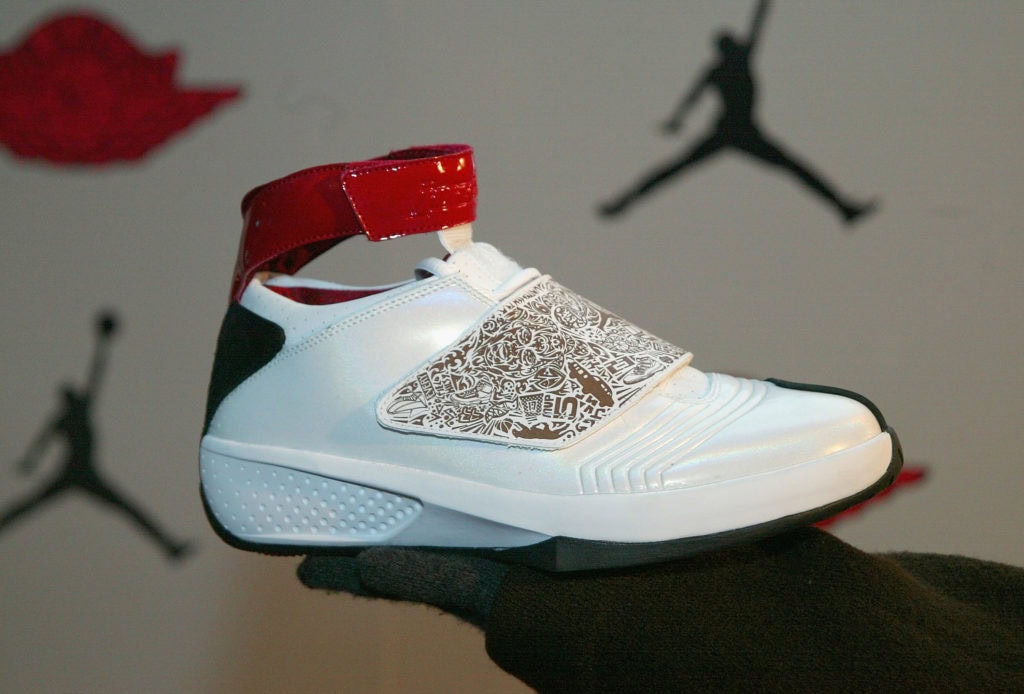
A Cash Cow
As the 2000s segued into the 2010s, two things happened.
The price of conventional leather increased and the demand for collectible sneakers skyrocketed.
From a fanfare standpoint and material costs, the Air Jordan 11 Retro was the marquee model when considering both trends.
For years, big brands introduced innovative fabrics and plastics to models old and new as a way to sell innovation on the upper while saving money. Plays like Hyperfuse didn’t hit when it came to lifestyle wear while woven materials such as Flyknit and Primeknit cut through.

Unfazed through it all was the Air Jordan 11 Retro: a model mostly made off Cordura nylon on the upper with its calling card of patent leather cascading the mudguard.
Because of the association of the AJ11’s exorbitant aftermarket prices and the material’s longtime placement on tuxedo shoes and luxury products, patent leather was idealized as expensive by consumers even if the opposite was true for manufacturers of footwear.
As fashion outlet NY Gal points out, patent leather “is actually less expensive than regular leather, due to the fact that it is a plastic coating over leather or faux leather.”
Because of this, product using patent leather can be produced at cheaper costs.
While NY Gal notes that new patent leather is not as high quality as it once was, this matters much less in 2021.
Why? Because the glossy material maintains a bright buzz in a world where hype sells and the average sneakerhead wears a different pair of shoes each day.
Due to lower costs and higher demands, Air Jordan 11 Retro releases now take place multiple times a year.
When considering inflation and abundant fanfare, these retros release at a much higher retail price than their 1995 introduction or even their 2000 reintroduction. Even better for consumers: Many more pairs are being produced to better and more safely satisfy demand and avoid paying aftermarket rates.
This proved particularly true in 2020 when the celebratory Air Jordan 11 Retro “Jubilee” made over $175 million in revenue.
As Complex suggested, at $220 a pair for adult sizes, this means Jordan Brand sold roughly 800,000 pairs. When accounting for kids sizes that sport a lower MSRP, some even assume the amount of “Jubilee” 11s made and sold eclipses the one million mark.
Not only was this impressive for a model first sold 25 years prior; it was amazing for a colorway that Mike never wore on-court.
Capitalizing on having a hit on their hands, the Jumpman has brought patent leather to retro releases of models the material never touched in original form.
Almost every Air Jordan signature to receive the retro treatment has had been blessed with a hit of patent with the 2021 Air Jordan 1 “Bred Patent” proving the most popular in recent time.
The irony in it all is that the Air Jordan 1 Retro peaked in popularity over the course of the 2010s much in part to pairs presented in premium tumbled leather.
While 2022 leaks list Air Jordan 11 Retro Lows on the way with their same signature glossy finish, it’s safe to say that other Air Jordan models made up in patent leather could continue to prove popular among fans and less expensive to produce for the brand.
This matters much for a material that almost never arrived on the Air Jordan franchise.
“There was a point where patent leather could’ve come off the Air Jordan 11,” Humphrey said, regarding focus group reactions to samples in the ’90s. “We had so many people shitting on the whole nature of patent leather because before then you’d only seen it on tuxedo shoes. People had this negative connotation then but we thought it was hot.”
Even so, the storytelling will have to remain on point to push this trend forward.
By bridging an archival narrative with a valued brand element, Jordan Brand closed 2021 with a commercial home run by way of the “Bred Patent” Air Jordan 1. The combination of classics was somewhat unexpected yet boldly familiar.
If Jordan Brand so chooses to use the same formula in the future by draping other classics in a candy coating, not only could it catch the same cache amongst modern sneakerheads but it could continue to maximize its margins just the same.